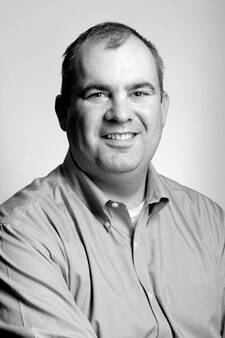The English journalist Auberon Waugh is usually credited with coining the term “the chattering classes,” his sneering moniker for the mostly educated, mostly informed portion of the population that often confuses gossip for fact and prides itself on insider status as it makes decisions for the unheard majority. The Catholic Church has been blessed and cursed by such a class since at least the days of the Medici, though for tech-savvy American Catholics the past two months have brought it newfound prominence through an unlikely conduit: social media.
Our usual fare of videos of dyspeptic cats and lurid updates on the clan Kardashian took a back seat for many chattering Catholics (I am one) to the pope’s visit to the United States in September and the gathering of the Synod of Bishops in Rome in October. Anyone with a Twitter account and passing familiarity with Catholicism (sometimes not even that) could put out a virtual shingle as a church expert. Few of these arrivistes logged on without a rather large ideological axe to grind, so much of the time everyone was incensed at everyone else. We officially jumped the shark at the close of the synod with a previously inconceivable moment in the history of American journalism, when a columnist for The New York Times took to Twitter to call a noted Catholic ecclesiologist a heretic. (Yes, you read that sentence correctly.) How did a three-week meeting that almost every participant described as a positive experience of collegiality and group discernment result in such vitriol?
Rather than focus on those staunch defensores fidei at The New York Times, we would do better to remember that the Second Vatican Council featured much the same hubbub and division. For all that Catholic traditionalists like to think that reformers in the church made off with everything but the sacristy sink at Vatican II, it is worth noting that many reform-minded Catholics at the time found the second half of the council a crushing disappointment. Writing in Commonweal during the council’s final days in 1965, the Rev. Hans Küng, a council peritus, complained that “the accomplishments of the council to date obviously fall short of what was generally expected.” The title of a Commonweal essay by the Rev. Gregory Baum a few months later is even more telling: “The Council Ends: Was It a Failure?”
After the council’s close, many of its newly famous periti gave lecture tours in the United States, including Father Küng and Edward Schillebeeckx, O.P. When he got home, the latter reported that he found the American church deeply divided. “The discontent among American priests and even hatred for bishops,” Father Schillebeeckx told a Dutch newspaper in 1968, “is indescribable.” The editors of America, never shy when offered a chance to be outraged on the hierarchy’s behalf, responded: “We suggest that Father Schillebeeckx was hotly pursued here in America by that terribly vocal minority of unhappy priests and laymen who pour their troubles into every new and available ear.”
A year before the council ended, John Cogley had declared in Commonweal that Romanità, the ancient ecclesiastical art of intramural politics, “has had its day” and that “many good men will weep for it during the hours of its final agony.” He added, “I will not be among them.” Contrarian respondents to his eulogy included the novelist (and Auberon’s father) Evelyn Waugh and a young priest named Andrew Greeley. A month later, America published an editorial entitled “Angry Young Men,” among whom they included “some of the more talented products of Catholic education. Others, if not the most intelligent, are at least the most vocal…. These young men would have a better chance of being taken seriously if they would avoid making themselves more obnoxious than they have to be.”
Also in those waning days of Vatican II, Bishop Mark McGrath, C.S.C., noted in America that he was “amused by some of the Pollyanna optimists of the First Session, many of whom are visibly lagging as we go into the fourth lap.” Writing decades later, Peter Steinfels similarly recalled the displeasure present on all sides: “Not only was there a Catholic right that had yet to come to terms with the Council’s reforms; there was a Catholic left that seemed determined to push them over a precipice.”
In other words, the council of 50 years ago, now lauded as a defining moment in the history of the church, was viewed even before it closed as a disappointment to almost everyone. How’s that for a precedent?








